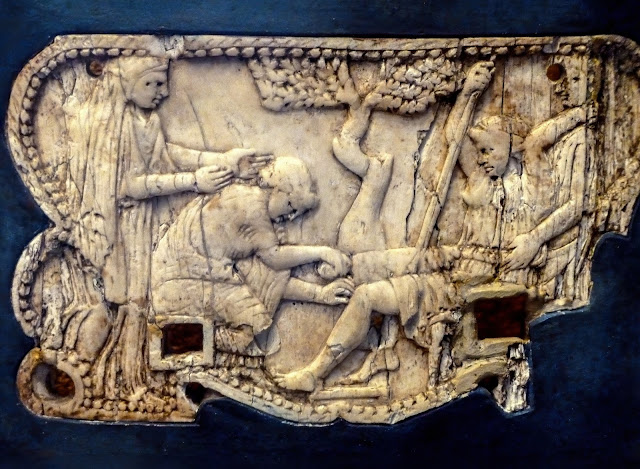Ancient Tree of Life in Pompeii iconography
While working on Wikimedia Commons today, I saw this interesting 1st century CE ivory furniture applique from Pompeii depicting a Roman birthing scene. The quality of the carving is quite good but what caught my attention was its inclusion of a stylized tree of life. The tree of life is widespread in the world's religious and philosophical traditions.
In ancient Iran dating back to approximately the early 2nd millennium BCE, two trees, Mashyа and Mashyane, were thought to be the ancestors of all living beings. In ancient Assyria, 2500 BCE-690 BCE, the sacred tree of life is depicted attended to by human or eagle-headed winged genies, or the King, and blessed or fertilized with bucket and cone.
In ancient Urartu, 860-590 BCE, the tree of life was a religious symbol drawn on walls of fortresses and carved on the armor of warriors. In the Jewish Book of Proverbs, dating to approximately 450 BCE, the tree of life is associated with wisdom. "Wisdom is a tree of life to them that lay hold upon her."
Image: Ivory plaque depicting a Roman birthing scene with tree of life, 1st century BCE-1st century CE, at the National Archaeological Museum in Naples, Italy, courtesy of Wikimedia Commons.




Comments
Post a Comment